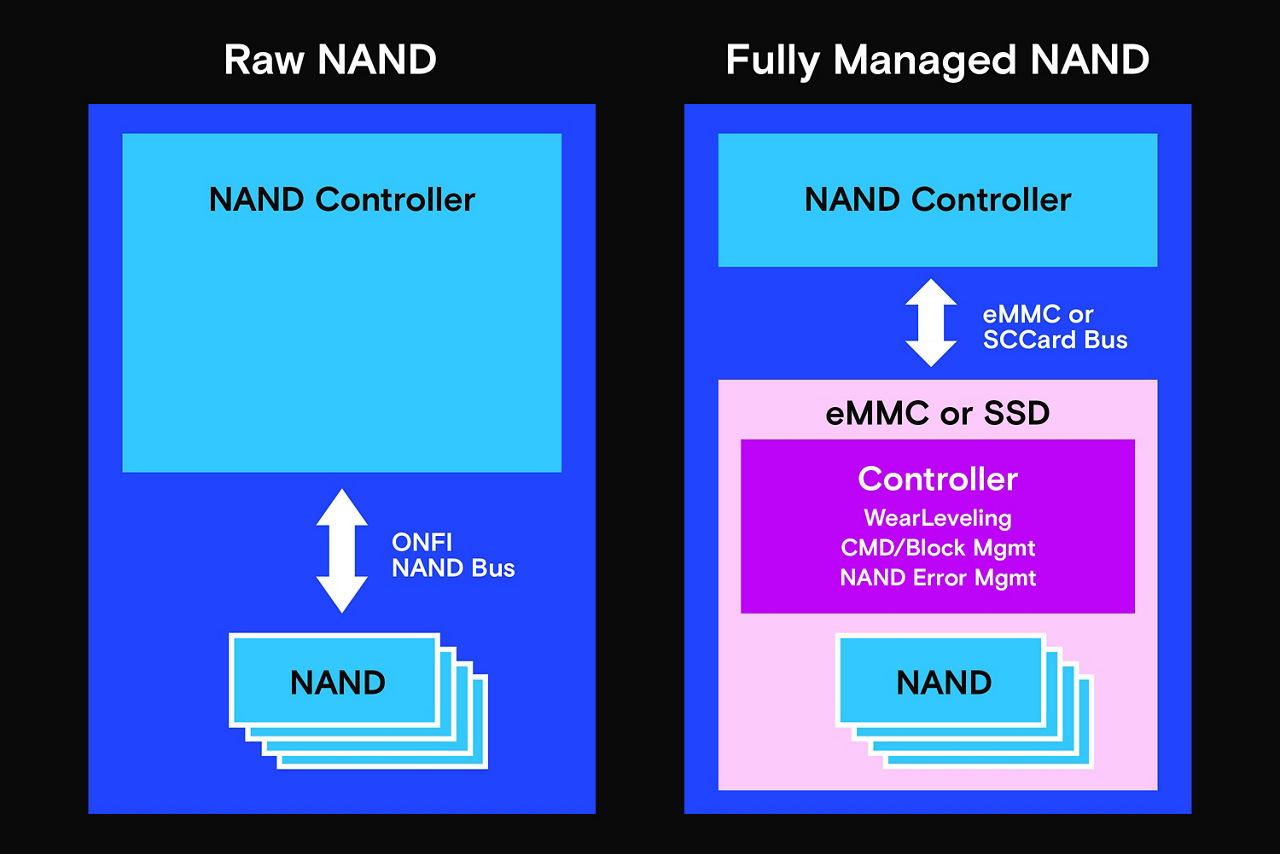New Account ?
Register Here
Unable to Sign In?
Visit Support
Raw NAND
Raw NAND provides the lowest cost per bit but requires an external host controller (not contained within the package) to perform all management functions (e.g., ECC, FTL).
Managed NAND
Managed NAND provides simpler solutions and speeds time-to-market because the controller is embedded within the package to handle wear leveling, bad block management and ECC.


